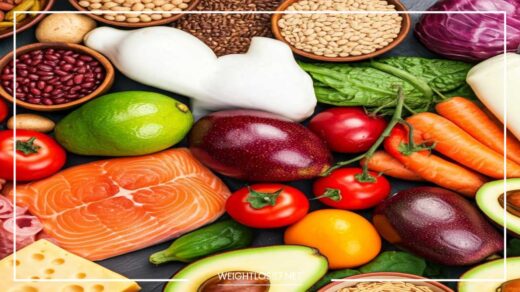Green Tea for Weight Loss: Fact or Fiction?

Green Tea for Weight Loss
Green Tea: Unveiling its Potential for Weight Loss
Green tea, a beverage steeped in tradition for millennia in Eastern cultures, has transcended borders to become a global phenomenon. Beyond its refreshing taste and calming aroma, green tea boasts a wealth of health benefits, including its potential to aid weight loss.
This comprehensive article delves into the science behind green tea and weight management, exploring its mechanisms of action, the existing research on its effectiveness, and practical ways to incorporate it into your weight loss journey.
Unveiling the Chemical Players: Caffeine and Catechins
Green tea’s potential for weight loss hinges on two key components: caffeine and catechins, specifically epigallocatechin gallate (EGCG). Let’s delve deeper into how these powerhouses work:
-
Caffeine: The Metabolic Spark Plug: A well-known stimulant, caffeine increases alertness and energy expenditure. Studies suggest it can boost metabolism by 3-4%, leading to slightly more calories burned throughout the day [1]. This translates to an additional 70-100 calories burned for a person maintaining a 2,000 calorie diet. Caffeine works by stimulating the central nervous system, increasing heart rate and breakdown of stored carbohydrates for energy [2].
-
Catechins: Potent Antioxidants with Fat-Burning Potential: Catechins are a group of powerful antioxidants found abundantly in green tea. Among them, epigallocatechin gallate (EGCG) is particularly noteworthy for its potential role in weight management. EGCG is believed to enhance fat burning by promoting lipolysis, the breakdown of fat cells for energy [3]. EGCG may also inhibit fat storage and increase thermogenesis, the body’s heat production, which further aids calorie burning [4].
The magic of green tea lies in the synergy between caffeine and EGCG. Caffeine kicks off lipolysis, and EGCG helps ensure the released fat is burned for energy rather than being stored. This collaborative effort can contribute to a modest increase in calorie expenditure and potentially aid weight loss.
Research Unveiling Green Tea’s Weight Loss Potential: A Balanced Look
While green tea isn’t a miracle weight loss solution, a growing body of research suggests it can be a valuable tool when combined with a healthy diet and exercise. Here’s a closer look at what science reveals:
-
Metabolic Boost: Studies investigating the thermogenic effect of green tea suggest that green tea extract or concentrated forms can increase metabolism by 3-4% [5]. This seemingly small increase can translate to burning an additional 70-100 calories daily, which can contribute to weight loss over time, especially when combined with a calorie deficit.
-
Fat Burning Enhancement: Research suggests that green tea may promote fat burning, particularly belly fat, during exercise [6]. A study published in the American Journal of Clinical Nutrition found that participants who consumed green tea extract before exercise burned 17% more belly fat compared to those who received a placebo [7]. EGCG’s role in lipolysis is believed to contribute to this effect by making stored fat more readily available for the body to use as fuel during exercise.
-
Appetite Suppression: Green tea may curb appetite by promoting satiety and feelings of fullness. This can lead to reduced calorie intake and support weight management efforts. Studies suggest that EGCG may interact with gut hormones that regulate appetite, leading to feelings of fullness and potentially reducing cravings [8].
It’s important to note that research findings can vary. Individual factors like genetics, body weight, overall diet composition, and baseline activity level can influence how green tea affects metabolism and weight loss.
Additionally, most studies on green tea and weight loss have been relatively short-term. Long-term studies are needed to fully understand the sustained effects of green tea consumption on weight management.
Unveiling the Green Arsenal: Exploring Green Tea Varieties
Green tea comes in various forms, each with its own unique taste profile and potential health benefits:
-
Sencha: The most popular green tea globally, Sencha offers a grassy, vegetal flavor. It is typically enjoyed hot and is a good source of EGCG.
-
Matcha: This vibrant green powder is made from finely ground green tea leaves. It boasts the highest concentration of EGCG among green tea varieties and delivers a robust, slightly bitter taste. Matcha is traditionally whisked in hot water to create a frothy beverage.
-
Genmaicha: This unique tea combines green tea leaves with roasted brown rice, resulting in a nutty and toasty flavor. Genmaicha is a good option for those who find the taste of pure green tea too strong.
-
Longjing: Renowned for its delicate, floral aroma, Longjing green tea offers a smooth and slightly sweet taste. This variety is known for its meticulous production process and is often considered a premium green tea.
-
Gyokuro: Nicknamed “Dewdrop Tea” due to its shade-grown cultivation method, Gyokuro boasts a rich, umami flavor and a deep emerald green color. It is known for its high L-theanine content, an amino acid promoting relaxation.
-
Bancha: This widely consumed green tea in Japan is known for its affordability and subtle taste. While containing lower levels of EGCG compared to some other varieties, Bancha offers a good source of antioxidants and can be enjoyed throughout the day due to its lower caffeine content.
-
Dragonwell: Hailing from Zhejiang province in China, Dragonwell green tea is known for its flat, needle-shaped leaves and a toasty, nutty flavor. It is a good source of EGCG and antioxidants.
Explore different green tea varieties to find a type that suits your palate. Remember, minimally processed green teas are likely to retain the most beneficial compounds, including EGCG. Experiment with brewing temperatures and steeping times to personalize your green tea experience.
Brewing the Perfect Cup for Weight Loss: Unlocking Green Tea’s Potential
To maximize the weight loss potential of green tea, consider these brewing tips:
-
Water Temperature Matters: Avoid using boiling water, as it can scorch the leaves and reduce their antioxidant content. Opt for water at 70-80°C (158-176°F) for most green teas. Sencha, Gyokuro, and Longjing thrive in this temperature range.
-
Steeping Time is Key: Over-steeping can lead to bitterness. Follow recommended steeping times based on the specific green tea variety. Typically, 2-3 minutes is ideal for Sencha and Longjing, while Matcha whisked in hot water requires a shorter steeping time of around 30 seconds.
-
Multiple Infusions for the Frugal Tea Enthusiast: Some green teas, like Sencha and Bancha, can be steeped multiple times. Experiment to find the perfect strength and number of infusions for your taste. This can be a cost-effective way to enjoy the benefits of green tea throughout the day.
-
Minimize Additives for Maximum Benefit: Avoid adding sugar, milk, or cream, as these can negate the health benefits and add unwanted calories. Honey or a squeeze of lemon can be used sparingly for subtle flavor variations. Consider natural sweeteners like stevia if desired.
Incorporating Green Tea into Your Weight Loss Journey: A Practical Guide
Here are some practical ways to integrate green tea into your daily routine for weight loss:
-
Enjoy it Throughout the Day: Aim for 2-3 cups of green tea daily. Spread them out throughout the day to experience sustained benefits. Consider having a cup in the morning to jumpstart your metabolism, another before lunch to curb cravings, and a final cup in the afternoon to prevent an energy slump.
-
Pre-Workout Boost: Have a cup of green tea 30-60 minutes before exercise to potentially enhance fat burning during your workout. The combination of caffeine and EGCG may help mobilize stored fat for energy and increase calorie expenditure during exercise.
-
Replace Sugary Drinks: Swap sugary beverages like soda or juice with green tea to reduce calorie intake and enjoy a hydrating alternative. This simple switch can significantly contribute to your weight loss efforts.
-
Combine with a Healthy Diet: Green tea isn’t a magic bullet. Pair it with a balanced diet rich in fruits, vegetables, whole grains, and lean protein for optimal weight loss results. Focus on consuming nutrient-dense foods that keep you feeling full and support a healthy metabolism.
-
Maintain an Active Lifestyle: Regular exercise is crucial for weight management. Green tea can be a great companion to your workout routine. The potential fat-burning benefits of green tea, combined with the calorie-burning effects of exercise, can create a synergistic effect for weight loss.
Additional Considerations:
- Quality Matters: Choose organic green tea whenever possible to minimize exposure to pesticides and other contaminants.
- Consult a Healthcare Professional: If you have any underlying health conditions or are taking medications, consult with your doctor before significantly increasing your green tea intake.
- Listen to Your Body: While green tea is generally safe for most people, be mindful of your caffeine tolerance. If you experience jitters, anxiety, or difficulty sleeping, reduce your green tea intake or switch to decaf green tea.
By incorporating green tea into your weight loss regimen alongside a healthy diet and exercise, you can unlock its potential benefits and support your journey towards a healthier you. Remember, consistency is key. Enjoying green tea regularly can contribute to a sustainable weight management approach.

















